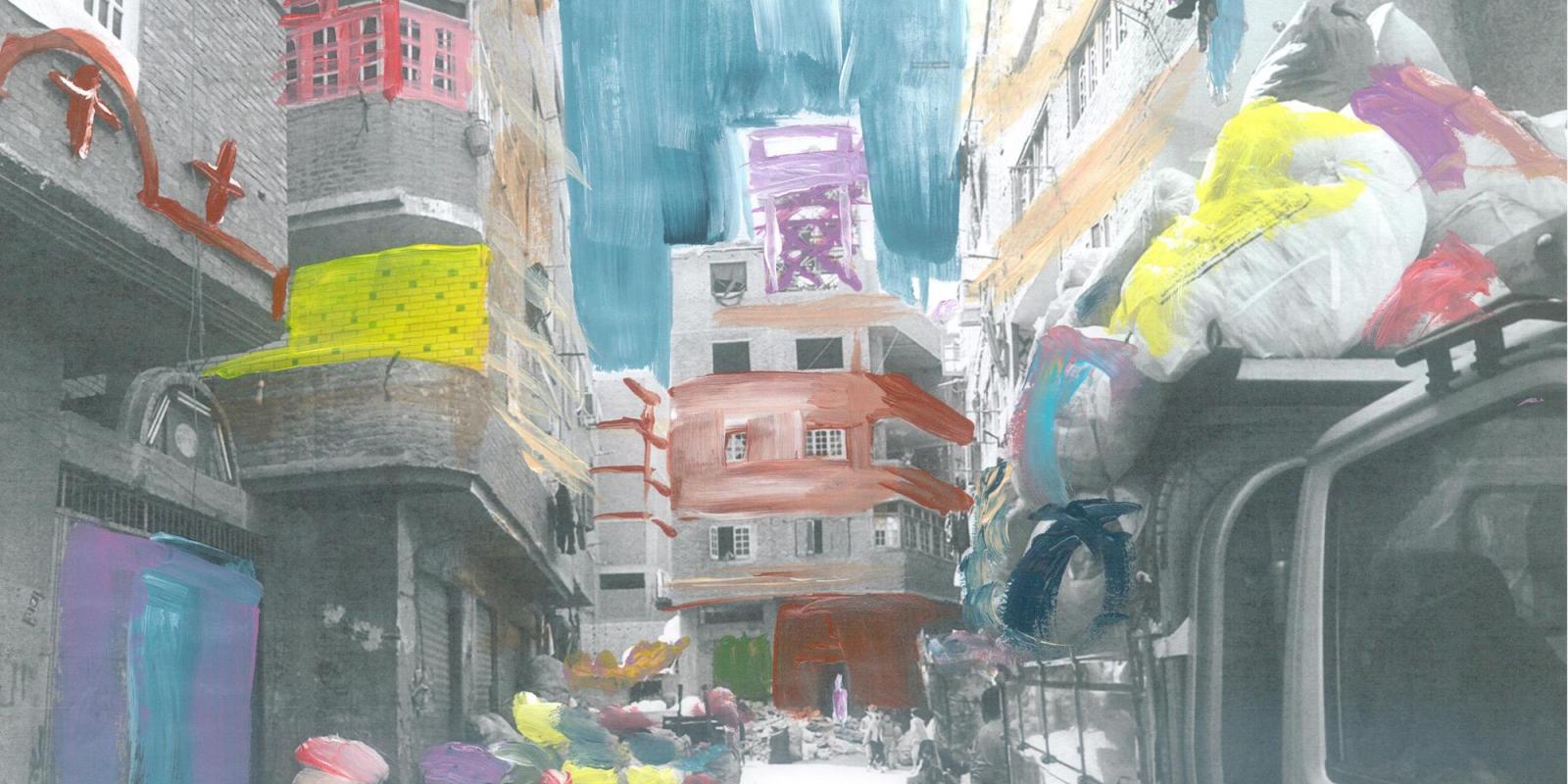
Alumna, Graduate Student Wins First Prize in UNESCO Architecture Competition
Heba El Sawy ’17, who graduated from AUC with a major in architecture and minor in anthropology, won first place in the UNESCO-UIA & MIDO Student Design Prize for Responsible Architecture competition, for her project, “Anthro-Architecture: The Mountains of Mansheyat Nasser.”
El Sawy’s project brought forth the social and anthropological aspects of architecture through Mansheyat Nasser’s Garbage City, a squatter settlement located by Egypt’s Mokattam Hills. Challenging stereotypes and exploring the hidden nuances of the city, El Sawy focused on the fluidity of Mansheyat Nasser, as well as the interactions between residents, “incomplete” architecture and garbage. Her project was praised by the jury for “the originality of the choice of place, program and design process and for its artistic and poetic dimension.”
“Garbage here is made up of the city’s thrown-out and leftover stories,” said El Sawy, who received her prize at the International Union of Architects World Congress in Seoul and is currently pursuing a master’s in anthropology from AUC. “The way it moves throughout Mansheyat Nasser is very fluid. The garbage is energy from the city. There are leftover stories that this world absorbs. The improvisation in building these homes is not random, but creates order and extends into multiple branches in this complex actor network.”
Challenging Stereotypes
El Sawy’s outlook on Garbage City and its residents differs from how it is presented in media outlets. Typically, she explained, the media portrays two polarized representations of the community: the first is people as “zabbaleen’” living among piles of waste, and the second is poor but hard-working and courageous people who are doing the job that no one else wants to do.
Her project challenges these stereotypes. “I was tired of the hegemony associated with designing for the community,” stated El Sawy. “There is a discourse regarding the community as a homogenized, stereotypical lower class who are in constant need of development and empowerment.”
Through her work, El Sawy discovered the hidden nuances of the city. “I learned about the concept of fluidity and that embracing fluidity is actually grasping one’s full potential,” she explained. “In acknowledging our fluidity, we remind ourselves how we are all so very connected. In realizing our fluidity, we are practicing an inert mode of resistance.”
El Sawy’s work revolved around the Actor Network Theory, which studies non-social factors to better understand social situations. This theory helped shape her perception of culture’s influence on architecture, and how social and cultural dynamics are affected by objects, ideas and other forces. “I believe that this is all relevant, not only to Cairene architecture, but to architecture in general because architecture is culture in context,” said El Sawy. “Neither culture nor context can be exclusive or monopolized by one field. Architecture is a physical and also nonphysical manifestation of culture.”
El Sawy asserted that a lack of fluidity in our perceptions will often create rigid constructs and categorizations that undermine the complexity of Mansheyat Nasser’s Actor Network Theory, its histories, worlds and dynamics that conceive and shape realities and narratives. “When designing for this unique site, with its unique actor network, the driving force behind any intervention – if at all – should be fluidity,” El Sawy noted.
Learning Through Design
The Design Prize for Responsible Architecture recognizes student projects that epitomize Habitat III’s New Urban Agenda of 2016: “urban and rural development that is people-centered, grounded in human rights and fundamental freedoms, ending all forms of discrimination and violence, and empowering all individuals and communities, while enabling their full and meaningful participation.”
El Sawy’s project was to design a site for the community in an urban setting that is aligned with Habitat III’s New Urban Agenda’s principles, which eventually allowed her to learn more about her responsible role as an architect “to collaborate with the community that builds for themselves.”
“I learned that architecture is not a project that is an injection of ego, it is a project of becoming, of listening, of setting a foundation for something that grows," El Sawy reflected. “When designing, one must explore the ontology of being through place-making.”
El Sawy’s AUC faculty supervisors, who advised her on fieldwork and architectural perspectives, praised her inquisitive approach. “She is a self-critical person who questions her own decisions and answers,” said Amr Abdel Kawi, professor of practice in the Department of Architecture and one of her faculty supervisors. “The key to her success was in finding her own voice, demonstrating courage and doing what she wanted to do in her own way.”
Throughout the project, El Sawy raised many questions about architecture, how it is being taught and its relevance to communities like Mansheyat Nasser. "The classical response would have been to push her focus back to the design problem at hand so as not to deviate from the objective of delivering a graduation project in design,” Abdel Kawi said. “However, it was a risk Heba was willing to take, and our job was simply to be there."
Hisham Gabr, professor of architecture and one of El Sawy's faculty supervisors noted, “She wanted to immerse herself in a process of self-reflection and let the design generate itself after exploring the constraints and requirements. She did that with an efficiency, panache and skill that has impressed local and invited examiners. Winning any architectural design competition is very difficult, whether it is local, national or international. I believe that her win will, and should, inspire many others to submit projects.”
Echoing the same sentiment, Hanan Sabea, professor of anthropology and another faculty supervisor for El Sawy, said, “Heba was ultimately able to reveal the connections between the material and immaterial, and convey in words, texts, maps and visual representations the possibility of imagining places, people and objects in alternative ways.”
